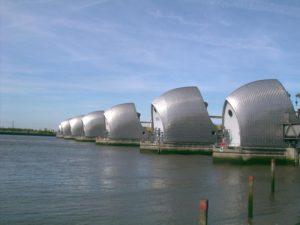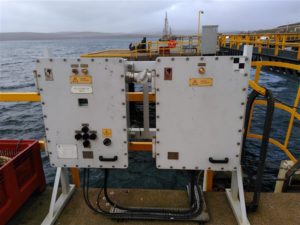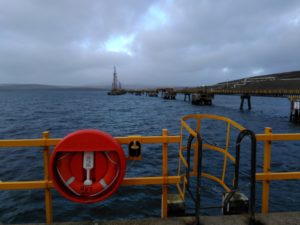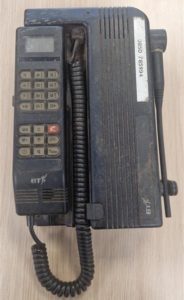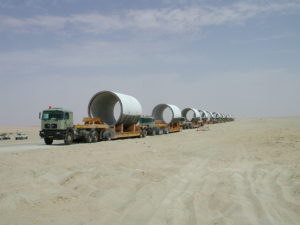CPCL in the 80’s and 90’s
To continue our celebration of CPCL's 75th Birthday, we are going to look back on our journey through the 1980's and 90's.
1980's
In a decade marked by rapid population growth and technological advancements, CPCL were growing too and a number of significant events happened which continue to influence our company today!
In May 1984, Queen Elizabeth II officially opened the Thames Barrier, a crucial structure designed to protect London from storm surges and tidal flooding. During the installation, CPCL was awarded the contract to utilise a Galvanic Anode Cathodic Protection system, protecting the steel rising sector gates which rotate to close across the river Thames, from corrosion. For over 40 years, we have maintained this system on behalf of the environment agency, and our technicians routinely visit the site to this day, to conduct inspections on the gates.
The 1980s also saw CPCL involved in other significant projects, such as the Sullom Voe Terminal in the Shetland Islands of Scotland, one of Europe’s largest oil and liquefied gas terminals. Construction of the terminal began in 1974 , and the first produced oil from the terminal was brought ashore in 1978 and by 1981, Queen Elizabeth II officially inaugurated the terminal. In 1987, CPCL designed and supplied the marine anti-fouling system for jetties two and four, on the fire water systems. Additionally, we installed a Cathodic Protection system at jetty two, commissioning our transformer rectifier units to protect the site from corrosion damage. These systems are still operational, and over the intervening years, CPCL have supplied replacement electrode units for the pumps, most recently in 2024, securing the project to resupply an anti-fouling system.
1987 saw a long- standing relationship start with the Agha Family, formed when Bassel Agha visited Grantham to meet our team and discuss a small Anti-Fouling Project in Abu Dhabi with Adma Opco. Our shared vision led to a strategic partnership in the UAE, and Bassel wrote a cheque for the first Purchase Order with CPCL. This business relationship with the Agha family has flourished over nearly 40 years, and we continue to collaborate closely in Abu Dhabi.
Clearly the 1980s was a transformative decade for CPCL!
1990's
In 1993, CPCL strengthened the professional relationship with Phillips Petroleum Company (now ConocoPhillips). Former CP technician and now contractor to CPCL, Peter Martin, along with former Director, Brian Slater, won the tender to supply and install an impressed current cp system for 𝟭𝟬 crude oil tanks at the Teesside oil tank farm. This project involved other key figures in CPCL's history, including Rob Britton, another former Director, who managed the project on-site, and Ivan Preston, who has now been with us for over 30 years! The project also included protecting the mile-long pipelines between the refinery and the remote tank farm. Peter Martin recalls two memorable firsts off the back of this job: the first time CPCL used spreadsheets for costings and the purchase of our first company mobile phone for the site office. This project marked a significant success, with a value of £350k.
𝟭𝟵𝟵𝟰, the same year that the world famous sitcom, Friends premiered, our senior CP engineer, Simon Filmore, joined CPCL. This was during another job for ConocoPhillips, where we performed remedial work on their jetty's CP system. Simon has recently celebrated his 30th year anniversary with CPCL!
From the late 90’s to the noughties, CPCL thrived in the Libyan market. During this period, United Engineers became our Libyan Agent, helping us to deliver projects in the area. We worked with major clients like Sirte Oil, Zueitina, Akakas, and Waha Oil Company. Despite the instability in Libya, CPCL continues to facilitate contracts there, maintaining strong business relationships with some of these companies to this day.
Additionally, in 𝟭𝟵𝟵𝟵, CPCL provided cathodic protection for underground pipelines at The Great Man-Made River Project in Libya. This project aimed to address severe water scarcity in North Africa, by transporting fresh water from ancient underground aquifers deep in the Sahara, to the Libyan coast for domestic, agricultural, and industrial use. The network spans around 1,750 miles, constructed from sections of 4m diameter pipes, which you can see in the photo below!
The 1990s marked a decade of ambitious projects and growth within the CPCL team, the best way to end the century and prepare for the new millennium. Stay tuned for next week as we take a look back at the past 3 decades of CPCL.


